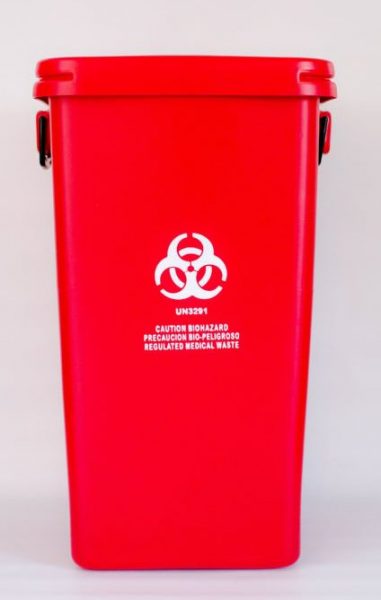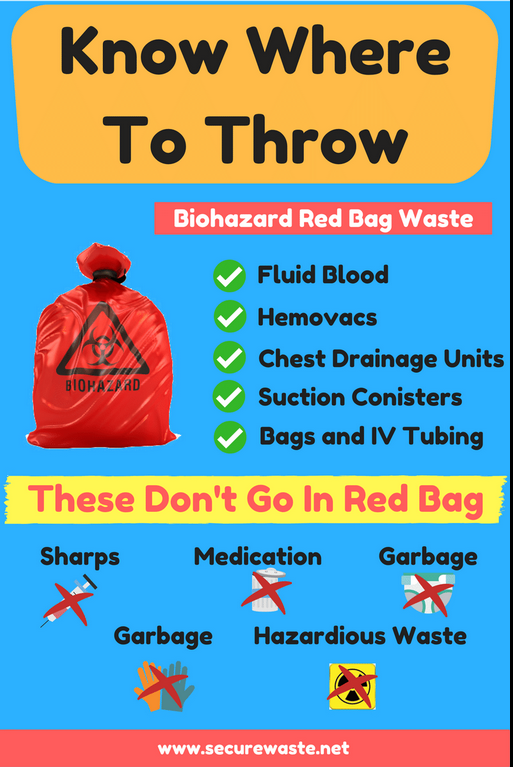Safeguarding Health: Professional Medical Waste Removal Services for a Tidy Atmosphere
Safeguarding Health: Professional Medical Waste Removal Services for a Tidy Atmosphere
Blog Article
The Value of Proper Medical Waste Disposal: An Overview for Health Care Facilities
Correct clinical waste disposal is an important aspect of health care facility management, making certain the safety and security and well-being of patients, staff, and the atmosphere. From comprehending the different categories of medical waste to conforming with regulative demands, health care centers have to take on reliable waste partition practices and select suitable disposal approaches.
Recognizing Clinical Waste Categories
Recognizing medical waste categories is critical for proper disposal in health care centers. Clinical waste is a wide term that encompasses various types of waste produced in health care settings, such as centers, labs, and medical facilities. Categorizing medical waste aids ensure that it is handled, saved, and disposed of securely and in conformity with applicable regulations.
There are several categories of clinical waste that healthcare centers need to be familiar with. These categories consist of transmittable waste, sharps waste, pharmaceutical waste, chemical waste, and radioactive waste (medical waste disposal services with WasteX). Each category has details qualities and needs various disposal techniques to reduce the threat of damage to health care employees, clients, and the atmosphere
Infectious waste, for instance, refers to waste contaminated with possibly infectious products, such as blood, body fluids, and cells. Sharps waste consists of needles, syringes, and various other sharp things that can trigger injury or send infections. Drug waste includes expired or unused drugs, while chemical waste includes hazardous chemicals utilized in clinical procedures. Radioactive waste consists of materials contaminated with radioactive compounds, such as nuclear medicine products.
Conformity With Regulatory Demands
Health care centers must guarantee conformity with governing requirements for proper medical waste disposal. Governing bodies, such as the Environmental Protection Company (EPA) and the Occupational Safety and Wellness Administration (OSHA), have developed regulations and standards to safeguard public wellness and the setting. These policies detail the proper handling, storage, transport, and disposal of clinical waste.
Conformity with governing requirements is vital for health care facilities to avoid lawful penalties, reputational damages, and potential damage to human health and the atmosphere. Failure to follow these regulations can result in penalties, lawsuits, and also the suspension or abrogation of running licenses.
To make certain conformity, medical care facilities ought to develop detailed waste administration programs that consist of personnel training, correct waste partition, and the use of proper containers and labels. Regular audits and evaluations should additionally be carried out to recognize any type of non-compliance concerns and address them without delay.
It is important for medical care centers to remain up to day with modifications in laws and upgrade their waste administration practices as necessary. This can be attained by actively keeping an eye on updates from regulative bodies and taking part in training programs and workshops.
Implementing Effective Waste Partition Practices
To ensure proper clinical waste disposal, health care facilities need to execute efficient waste segregation practices. Waste segregation is a critical action in the overall waste administration process, as it aids lessen the threat of infection, avoids cross-contamination, and ensures the secure disposal of different kinds of waste. Reliable waste segregation techniques include separating medical waste right into different classifications based on its attributes and potential hazards.
One typical practice is the segregation of sharps waste, such as needles and scalpels, from other kinds of clinical waste. Sharps waste should be put in puncture-resistant containers to avoid injuries and prospective infections. Furthermore, contaminated materials, such as drugs and chemicals, must be divided from basic clinical waste to avoid environmental contamination.
Proper labeling and color-coding of waste containers are vital for effective waste segregation. Noticeable and clear tags need to be put on each container to show the kind of waste it has and any special delivery demands - medical waste disposal services with WasteX. In addition, color-coding can be utilized to differentiate in between different waste categories, making it easier for medical care staff to identify and get rid of of waste correctly
Normal training and education for healthcare team is important for the successful implementation of waste segregation techniques. Team member need to be educated on the various waste groups, appropriate partition techniques, and the importance of adhering to waste monitoring procedures. This will certainly assist make sure compliance and uniformity in waste segregation techniques throughout the facility.
Choosing Appropriate Disposal Approaches
Proper choice of suitable disposal techniques is vital in making certain the environmentally liable and safe management of clinical waste in health care facilities. Health care centers generate a range of clinical waste, including sharps, contagious waste, pharmaceutical waste, and chemical waste - medical waste removal near me. Each kind of waste needs certain disposal techniques to decrease the threat of contamination, injury, and ecological damage
One usual disposal technique for clinical waste is incineration. Incineration involves the controlled burning of waste at high temperature levels.

Chemical sanitation is another method made use of for sure kinds of clinical waste, such as pharmaceutical waste. This technique utilizes chemicals look at this website to neutralize or ruin pollutants. It is crucial to select chemicals that are safe and ecologically friendly.
In many cases, garbage dump disposal may appropriate for non-hazardous clinical waste (medical waste disposal services with WasteX). Appropriate partition and packaging are vital to stop leak or contamination.
Eventually, healthcare centers should thoroughly examine the attributes of their medical waste and pick appropriate disposal techniques that focus on safety, environmental protection, and regulative compliance. Routine training and monitoring are vital to make certain that healthcare personnel complies with appropriate disposal methods.

Training and Educating Staff on Correct Disposal Treatments
Personnel education and training play a critical function in ensuring the appropriate disposal of clinical waste in medical care centers. It is crucial that all team member, including physicians, registered nurses, technicians, and support staff, obtain thorough training on appropriate disposal treatments. This training should cover the various types of clinical waste, their possible risks, and the appropriate methods for handling, setting apart, and throwing away them.
Among the primary objectives of staff education and learning and training is to make sure that all healthcare professionals comprehend the significance of medical waste disposal services with WasteX correct disposal procedures and the prospective effects of improper waste management. They need to be knowledgeable about the risks connected with medical waste, such as the transmission of infections and the contamination of the atmosphere. medical waste removal service. By comprehending these risks, personnel will be a lot more motivated to follow proper disposal methods and take the needed preventative measures to shield themselves, their coworkers, and the community
Educating must likewise cover using personal safety tools (PPE) and the proper methods for managing medical waste. Personnel need to be educated on how to identify and segregate various kinds of waste, such as sharps, transmittable waste, and unsafe chemicals. They ought to likewise be trained on the proper use waste containers, such as sharps containers and biohazard bags, along with the value of labeling and sealing these containers correctly.
Moreover, personnel education and learning and training should include regular updates and refresher course training courses to make sure that health care professionals stay educated about the most up to date laws and ideal techniques in medical waste disposal. This ongoing education and learning is important to preserve a high degree of understanding and compliance amongst employee.
Final Thought
In conclusion, proper clinical waste disposal is of why not try here utmost importance for medical care centers. Comprehending the different groups of medical waste and abiding with regulative needs makes sure the security and well-being of both medical care workers and the general public.
From recognizing the different groups of clinical waste to abiding with regulatory demands, healthcare facilities should embrace effective waste segregation methods and pick suitable disposal techniques. These groups include transmittable waste, sharps waste, pharmaceutical waste, chemical waste, and contaminated waste.To make sure correct clinical waste disposal, medical care centers have to implement reliable waste partition techniques. Waste partition is a critical action in the total waste monitoring process, as it helps decrease the risk of infection, protects against cross-contamination, and ensures the safe disposal of various kinds of waste. Healthcare centers create a variety of clinical waste, including sharps, transmittable waste, pharmaceutical waste, and chemical waste.
Report this page